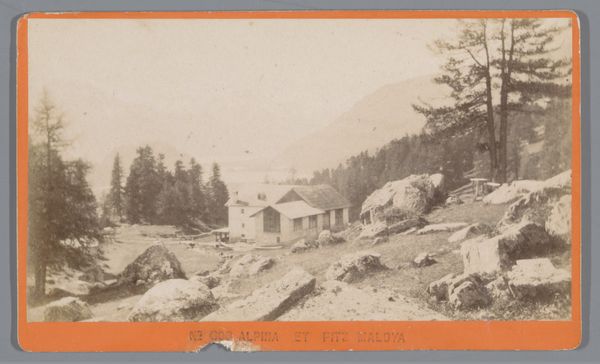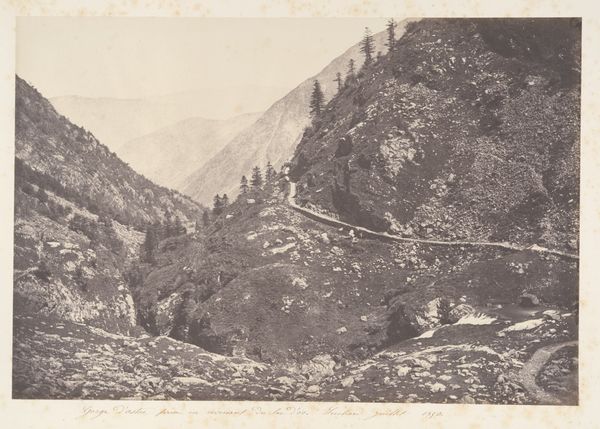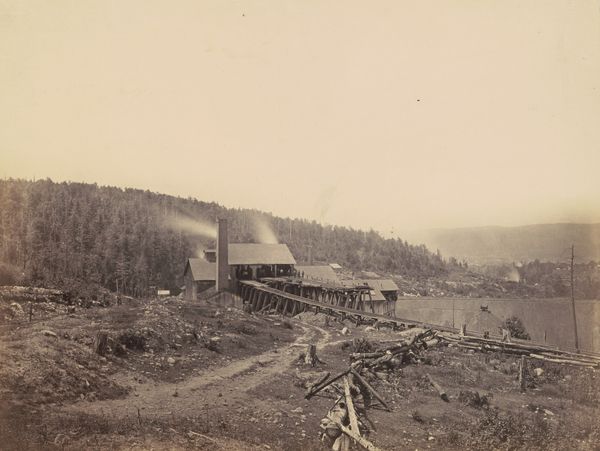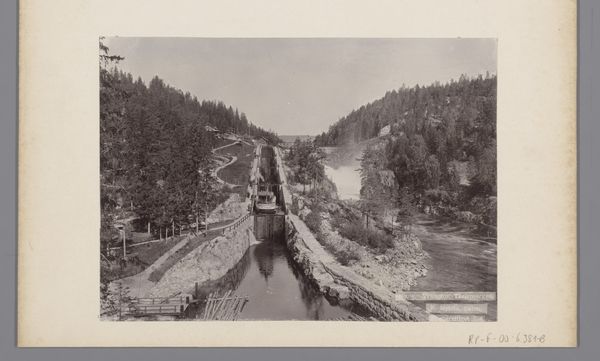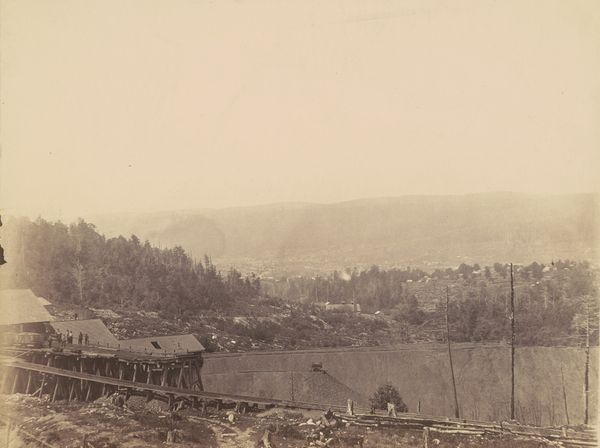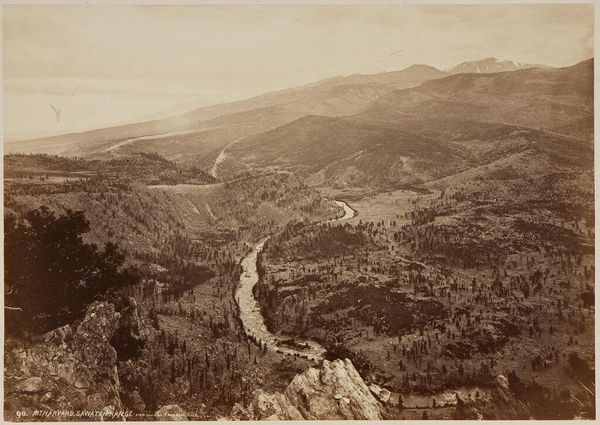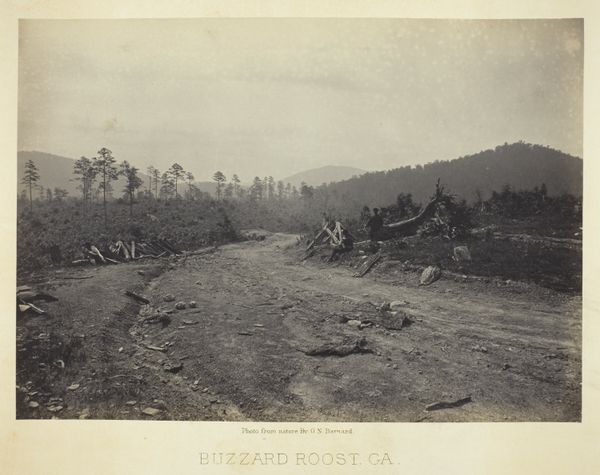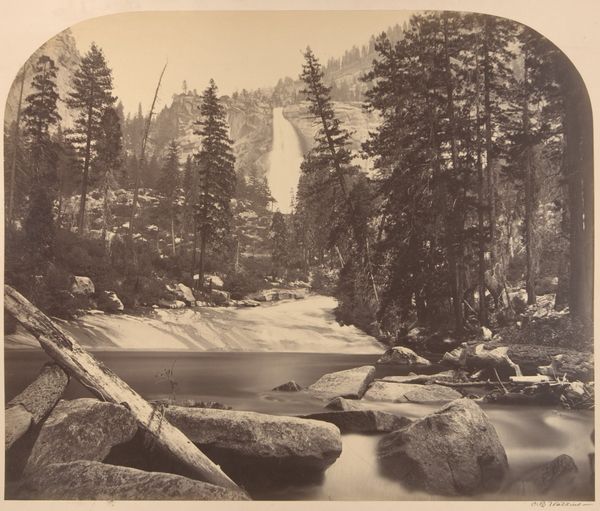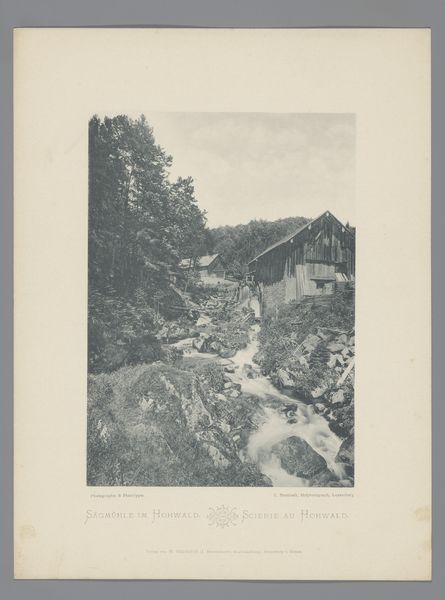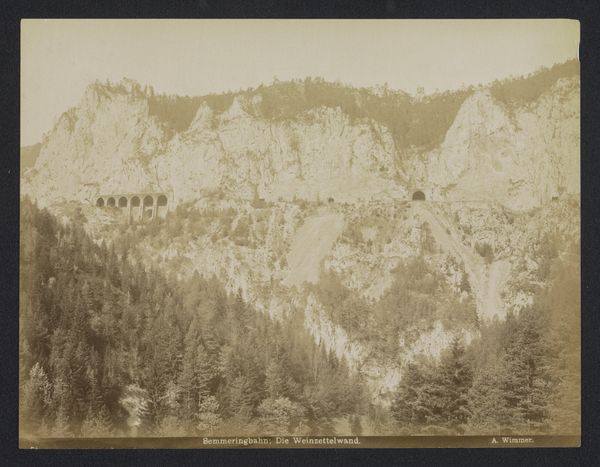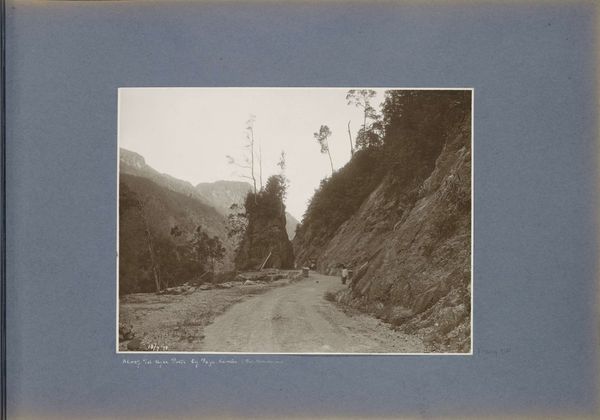
print, photography
#
16_19th-century
# print
#
landscape
#
photography
#
united-states
#
history-painting
#
realism
Dimensions: 25.6 × 35.8 cm (image/paper); 41 × 50.9 cm (album page)
Copyright: Public Domain
Curator: I am immediately struck by the texture in this landscape—the sharp contrast between the felled trees in the foreground and the verdant hillside, and the road that leads towards the center. It creates a feeling of vastness within this captured moment. Editor: Let's take a closer look. This albumen silver print, "Whiteside Valley below the Bridge," was created in 1864 by George N. Barnard. What strikes me most is how the landscape speaks of both natural beauty and its industrial exploitation during the American Civil War. This photographic work documented sites across the American South as it had far reaching influence on the economy, ecology, and labor in the United States. Curator: Industrial exploitation is an astute way to characterize this moment in time. Note how Barnard's composition draws our eye along that newly constructed road. It is the picture's spine and an emblem of accessibility, a transformation of a place achieved through extensive material labor. Editor: Absolutely, the road and rudimentary buildings depicted showcase not just landscape photography as an artform, but also a material testament of industrial practices. These kinds of landscapes would change quickly and rapidly shape not just the economy but everyday life. And of course the work asks us to examine its production – who developed these materials, at what cost, and what power structures were at play? Curator: Considering the tonal range is so contained, how would you say the values help clarify, obscure, or perhaps distort that tension? Editor: The monochromatic rendering invites contemplation about how nature is viewed, shaped, and utilized. Its subdued palette makes us feel this location and reminds us to think critically about the process that went into the labor to construct a road like this. Curator: Examining the photographic techniques of the era, particularly the specific labor involved in constructing and maintaining such infrastructure, has indeed been quite revelatory here. Editor: And understanding the context, coupled with reflecting on its formal qualities, helps reveal how landscapes shift. Thank you for highlighting that dimension!
Comments
No comments
Be the first to comment and join the conversation on the ultimate creative platform.
